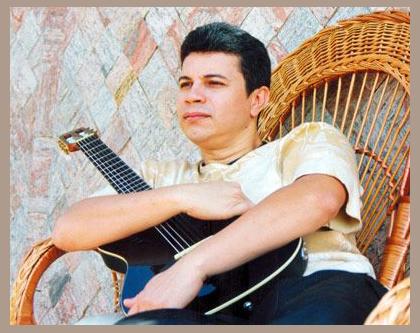 Darwinson
Darwinson
Origins and Rise:
Darwinson emerged in the vibrant music scene of Rio de Janeiro, Brazil, in the early 2000s. Fueled by a passion for samba and the rhythms of their homeland, the band quickly gained recognition for their infectious melodies and captivating lyrics. Their breakthrough hit, "A Barca," became an instant anthem, propelling Darwinson to national and international fame.
Challenges and Controversies:
Darwinson's success was not without its challenges. In 2005, the band faced legal issues related to the unauthorized use of a copyrighted melody in one of their songs. This setback forced them to re-record the album and temporarily halt their live performances.
Despite this adversity, Darwinson remained resilient. They embraced the opportunity to evolve and refine their sound, incorporating elements of funk, reggae, and Brazilian folk music. This fusion created a distinctive rhythmic tapestry that set them apart from their contemporaries.
Discography:
Darwinson's discography boasts a diverse collection of albums that showcase their musical growth and experimentation. Their debut album, "Ao Vivo no Morro do Chapéu Mangueira," featured the chart-topping hit "A Barca" and established them as a formidable force in Brazilian music. Subsequent albums, including "Roda Viva" and "O Bom Samaritano," further cemented their reputation as masters of rhythm and melody.
Members:
Darwinson is composed of talented musicians who have dedicated their lives to creating infectious music. The band's core members include:
* Marcelo D2 (vocals)
* Xande de Pilares (vocals)
* Magrão (guitar)
* Jorge Frajola (bass)
* Serginho Procópio (drums)
Legacy and Impact:
Over two decades after their formation, Darwinson remains one of the most influential bands in Brazilian music. Their ability to blend traditional rhythms with contemporary influences has created a unique and enduring sound that continues to captivate audiences worldwide. With their energetic live performances and timeless melodies, Darwinson has cemented their place as icons of Brazilian culture.
Darwinson emerged in the vibrant music scene of Rio de Janeiro, Brazil, in the early 2000s. Fueled by a passion for samba and the rhythms of their homeland, the band quickly gained recognition for their infectious melodies and captivating lyrics. Their breakthrough hit, "A Barca," became an instant anthem, propelling Darwinson to national and international fame.
Challenges and Controversies:
Darwinson's success was not without its challenges. In 2005, the band faced legal issues related to the unauthorized use of a copyrighted melody in one of their songs. This setback forced them to re-record the album and temporarily halt their live performances.
Despite this adversity, Darwinson remained resilient. They embraced the opportunity to evolve and refine their sound, incorporating elements of funk, reggae, and Brazilian folk music. This fusion created a distinctive rhythmic tapestry that set them apart from their contemporaries.
Discography:
Darwinson's discography boasts a diverse collection of albums that showcase their musical growth and experimentation. Their debut album, "Ao Vivo no Morro do Chapéu Mangueira," featured the chart-topping hit "A Barca" and established them as a formidable force in Brazilian music. Subsequent albums, including "Roda Viva" and "O Bom Samaritano," further cemented their reputation as masters of rhythm and melody.
Members:
Darwinson is composed of talented musicians who have dedicated their lives to creating infectious music. The band's core members include:
* Marcelo D2 (vocals)
* Xande de Pilares (vocals)
* Magrão (guitar)
* Jorge Frajola (bass)
* Serginho Procópio (drums)
Legacy and Impact:
Over two decades after their formation, Darwinson remains one of the most influential bands in Brazilian music. Their ability to blend traditional rhythms with contemporary influences has created a unique and enduring sound that continues to captivate audiences worldwide. With their energetic live performances and timeless melodies, Darwinson has cemented their place as icons of Brazilian culture.